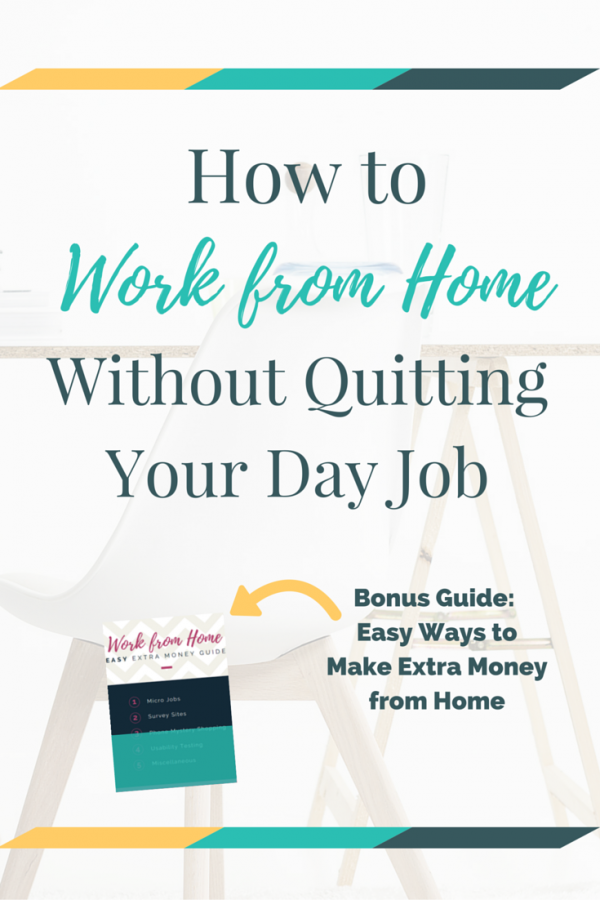 Image Source: Pexels
Image Source: Pexels
Freelancing has become an extremely popular method of securing an income. Not only does it allow you to work whatever hours you like, but you can be flexible with the type of clients you take on and you make the rules as you go. However, as much as it offers freedom, it can also be very restrictive at times and you might feel like you’re being ordered around more than you were at your previous job.
But despite the ups and downs, there is a great sense of accomplishment when you send your first invoice and get paid. To help you along the way here is a complete guide on how to go from nothing to getting your first payment from a client. It will walk you through all the steps and it will be as general as possible, while also giving plenty of examples. This is invaluable freelancing advice that you’d be wise to follow!
Step 1: Don’t quit your job
It’s a common misconception that you need to quit your current job to put enough time and effort into a freelancing career. This is false. Unless you have a lot of savings accumulated you should never, under any circumstances, quit your current day job until you have a steady line of clients or you feel that your day job is holding you back.

How to Work from Home Part-Time Without Quitting Your Day Job
Step 2: Discover why you want to freelance
Imagine you’re holding a steady job that’s more than enough to pay the bills and feed yourself. You need to ask yourself why you’d give that up for a life of freelancing. Is it because you prefer the freedom of working alone, do you have a condition or illness that’s affecting your ability to travel to work, or do you want a change of pace?
Going freelance is a big decision that should never be taken lightly and it needs an unwavering commitment. If you’re still unsure about what you want, then take freelancing as a side job and test the waters before you dive in.
Step 3: Develop a skill
Don’t just assume that whatever you graduated with can be turned into a freelancing career. Sure, perhaps you were great at art and design at school and you fancy yourself an artist. However, do you have what it takes to turn that skill into a job, or do you just draw for recreation? Contrary to popular belief, turning something you love into a job can completely ruin your enjoyment of that activity. For that reason, you might want to twist your skills to be more industry friendly.
For example, if you love to write fiction then perhaps consider a freelance writing job for reviews and news—fictional writing is hard to turn into a source of income, but many publications around the world love to hire new writers to report on various things.
Step 4: Build a portfolio
Unlike traditional jobs that want both experience and qualifications, a regular freelancing job usually doesn’t require you to have qualifications—you just need an excellent portfolio. “Portfolio” is just a fancy term for a history of work that you’ve done. You need to have a decent amount of experience and to display that, you need to set up a website to show your completed works or a blog that will link to things you’ve done.
Let’s say you want to start as a graphics designer that takes commissions. Without a portfolio, most clients won’t come to you for help unless they expect you to work as a volunteer. It’s also possible to create works of art and samples to add to your portfolio. If you’re a budding writer, then start up a blog and write about various things and add it to your resume when you pitch ideas to potential clients.

Learn to Impress Clients with Your Portfolio
Step 5: Pitch ideas and send resumes
Work isn’t going to come to you and there aren’t many legitimate websites where you can put your freelancing skills to use for money. The best way to get clients is to network and work as a volunteer for a while. Look for startup companies and websites that are willing to buy your services for cheap, advertise your services on various online websites and local publications, and pitch ideas to online websites.
You can’t be scared of interacting with people and you have to be willing to take the initiative if you want to get noticed.
Step 6: Manage your time and complete your work
Most volunteer positions won’t impose deadlines on you, but it’s still a good idea to use tools for managing time so that you can get the most out of each day. It doesn’t take long to set up and having a set schedule is a great way to build accurate estimates of how long your work will take.
Once you’ve received assignments, you want to try and finish them as soon as you can and with high-quality results. Even if it’s just a volunteer assignment you want to have some shining examples of your work to display in your portfolio. The reason you work for free at the beginning is just to build up experience, which is why it’s recommended you start freelancing while working a regular job.
Step 7: Upgrading to paid work
Throughout your time working as a volunteer or for small change, you need to continuously look for new opportunities. Keep pitching ideas to several publications, keep looking online for paid positions and never stop building up your portfolio. Word of mouth and references from people you’ve networked with are great ways to get jobs, but online job portals can also serve as good places to look because many outsourcing companies recruit freelancers to work under their banner.

How to Ensure You Get Paid as a Freelancer
Step 8: Getting paid
Once a job is complete, you need to write an invoice. There are many guides online on how to create your own, but if you want to save time then it’s a good idea to register for cloud accounting software that can help you manage your finances and invoices.
Remember that you’re going to be self-employed, so register for the appropriate tax and try to manage your money properly. As soon as you start getting a steady stream of clients, you can quit your day job, take on more work and live the dream.





